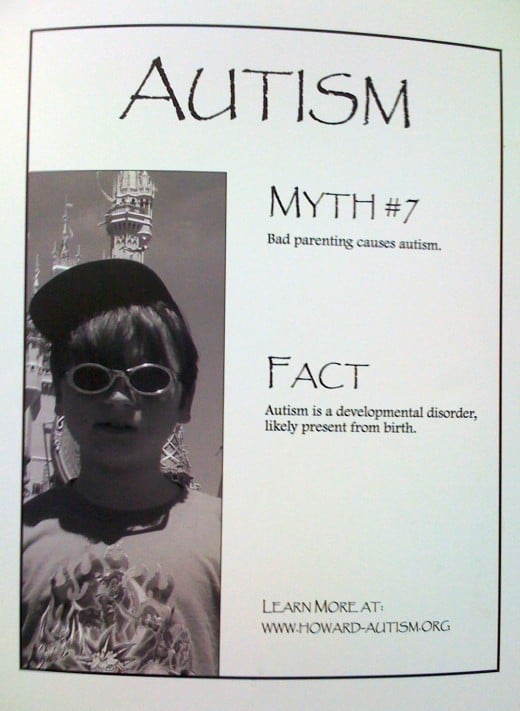Tips for Managing and Avoiding ADHD Meltdowns

Living or working with children who have special needs that have a negative impact on their behaviour can be stressful and incredibly hard work. Children with conditions such as Attention Deficit Hyperactivity Disorder (ADHD) can present with very challenging and at times aggressive and even violent behaviours which can lead to them becoming disliked, feared and excluding from peer groups, friendships and at times school.

Children who have ADHD still have a caring, positive and happy side to their nature but can at times find this harder to show and become aggressive and frustrated easily over seemingly normal everyday events and demands. They may struggle to concentrate on things for more than a short time, especially if they are not interested in the topic and yet when engaged in an interest of their own may find it difficult to come away from the activity when they need to or to transition on to other things. These behaviours alone can cause huge difficulties in day to day life and within a school environment where everyone is expected to join in with each lesson and to work through and participate in a range of tasks and activities throughout each day.
There are many techniques or variations on strategies used with typically developing children that work well in helping children who have ADHD to stay in control of their behaviours and enable them and the people around them to have more positive and enjoyable experiences. Some of these such as set routines maybe different to what may be used with a typically developing child of the same age but can still result in large and positive changes. Strategies aimed at typically developing children may need some adaptation in order to work for a child who has ADHD due to the fact that they do not see or understand the world in the same way and may not be motivated in the same way or in achieving the same things.
1. Routine – Many children who have ADHD do not cope with the unexpected so having a firm and consistent routine can provide a huge amount of stability and security. Having set times for daily activities such as getting up, going to bed, leaving for school and eating dinner let them know when things will happen and also mean that parents and teachers can use these as a reference point for other tasks. For example, if you only want your child to play video games for two hours a day this could be set as the time between getting home from school and changing out of school clothes and dinner time. This way the child knows exactly what to expect rather than having the experience of suddenly (to them) being told that dinner is ready and they must turn of their game for the day. This is a scenario that any child may find stressful and upsetting but doubly so for a child who has ADHD. Routines can be drawn out in visual timetables or written on to calendars or posters. Pictures, symbols and photographs can also be used if they help. For activities that do change Velcro can be used to attach and detach these easily. Separate timetables can be used for school and home and even small tasks such as bedtime or morning routines can be broken down into steps to make them easier to remember and follow.
2. Consistency – Like with routine, being consistent in the way that you deal with your child’s behaviour can have a big impact. A lack of consistency, such as punishing a child for something one day and then ignoring it the next is not only unfair but will lead to confusing and frustration for the child in question. This in turn can lead to more frequent meltdowns. When making rules be sure that your child understands what behaviour you are referring too and what to expect. Do not make things to complicated as this can lead to misunderstandings and confusion and try to avoid saying things like ‘you can do this at home but not at Granny’s house’. Although some children may be to handle this difference many will not and will genuinely forget or find it hard to control themselves or reason that if the behaviour is ok then it is ok full stop. Visual aids such as lists of acceptable and unacceptable behaviours can be helpful and symbols or photos can be used if these help your child to process and remember easier.
Be realistic if you decide to set punishments and do not make threats that you cannot keep or see through. Not following through on what you say will only enforce the fact that the rules do not matter and that the child can get away with behaving as they chose regardless of what you say. Always be careful to tell the child that it is their behaviour that you are unhappy/upset/disappointed/angry with and not them. It is important that they do not begin to think that they are bad as this can lead to poor self-esteem and cause more problems in the future.

3. Ignore the small stuff – It can be the case that the best approach with some behaviour, that are not too serious or dangerous is to just ignore them. Many children lose interest in things far quicker if it gains no attention. Negative attention is better than no attention at all.
4. Praise – Always remember to praise your child when they do well, for example in remembering a previously difficult rule. Praise boosts a child’s self-esteem and reinforces the difference between good and bad behaviours. If you punish a child for bad behaviour and then do not praise good it can become difficult for them to know when they have done well as it can appear as if they never gain your approval. Be clear in what you are praising so that the child knows what they have done and how to repeat it in future.
5. Distraction – Distracting a child or redirecting them to another activity or place can be useful in avoiding meltdowns. Side tracking a child in this way can make them forget what had previously upset or frustrated them so much. One advantage of the distraction technique is that it can be used anywhere either using the environment (‘oh wow, look at that red car’) or using an item brought from home such as a magazine, handheld game, fidget toy or similar. The change in conversation or focus grabs their attention and may help delay or even avoid a meltdown.
6. Rewards – For many child who have ADHD reward charts have limited if any success. Children may find it difficult to visualise ahead to gaining the reward or feel that earning it is too much of a task. If their progress is slow then reward charts are even less likely to be effective as the child can end up feeling they will never succeed or that it will be easier to not continue to try. An alternative to try is to start the day with a full chart or jar containing beans or other small individual objects. Each time your child misbehaves you remove one item from the jar or chart. Watching this decrease is much easier for a child to understand and has a strong visual affect, which can be very reinforcing for many children who have ADHD. At the end of the day convert any items left in the jar into treats such as small denomination coins, extra minutes on a favourite computer game or to stay up at night or anything that may appeal to your child and suits your budget. If your child is able to understand the concept you could introduce the idea that they can save their daily rewards up for bigger rewards, say at the end of the week. So for example, if they earn fifty treats during the week they get a bonus twenty. This idea can also work based over a week but working daily is more likely to have results as it offers faster results for the child and is reset and reinforced every day. Using daily rewards also gives the message that each day is new and a chance to do better which is never a bad belief to have

This content is accurate and true to the best of the author’s knowledge and is not meant to substitute for formal and individualized advice from a qualified professional.
© 2014 Claire








